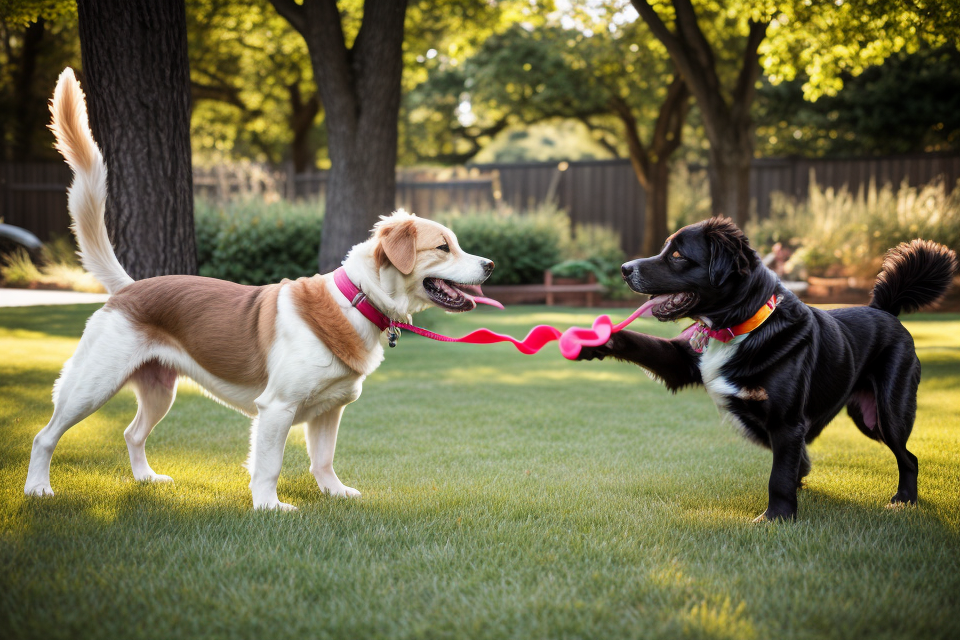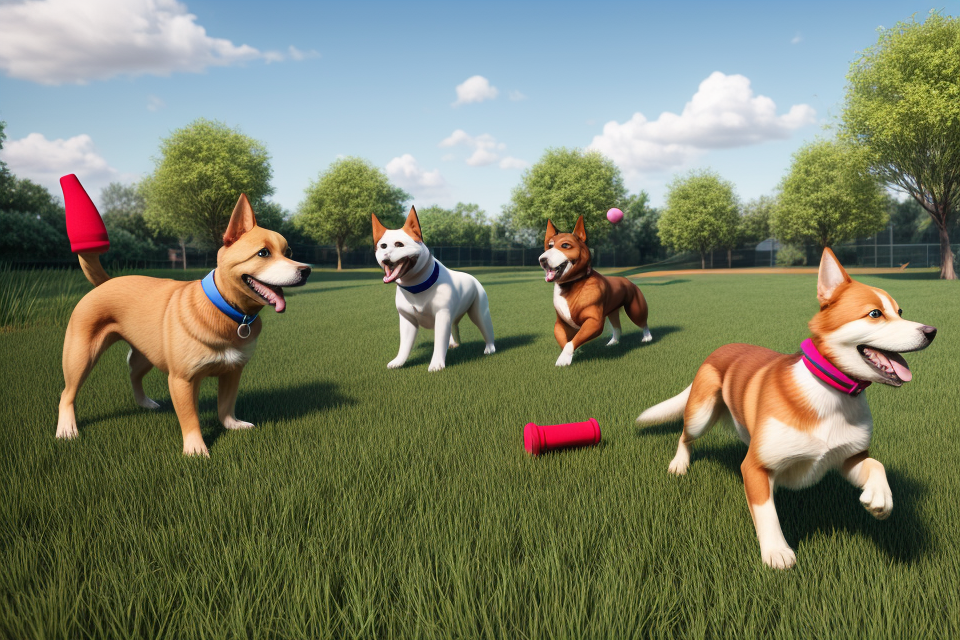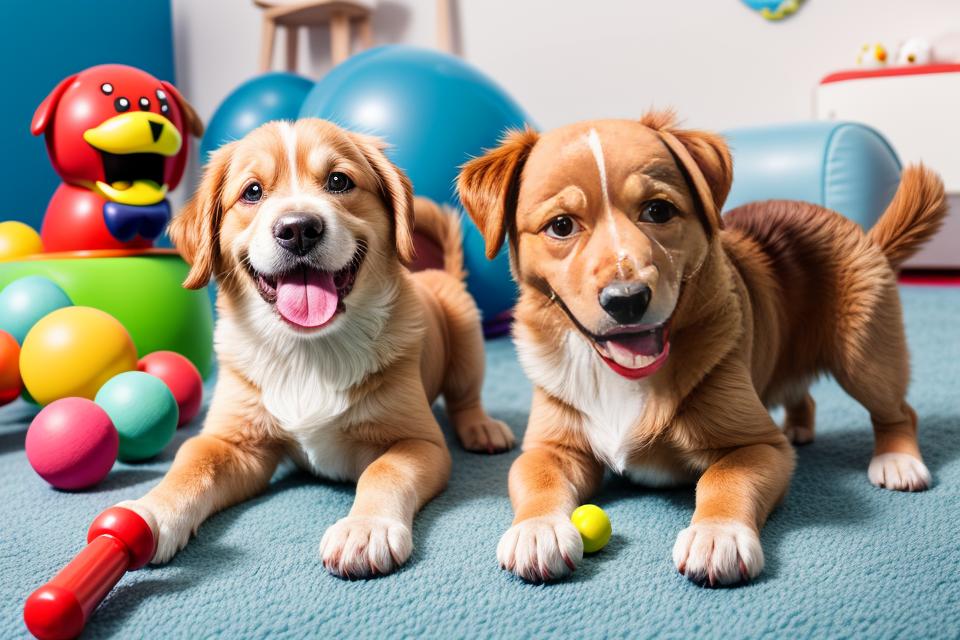When it comes to playing with our furry friends, we often wonder what activities are the best for them. Tugging games are a popular choice among dog owners, but the question remains – are they good for our dogs? In this article, we will explore the pros and cons of tugging games and determine whether they are a suitable way to play with your dog. From the benefits of mental stimulation to the potential risks of aggression, we will cover it all. So, buckle up and get ready to find out if tugging is a good way to play with your furry pal.
Tugging can be a fun and engaging way to play with your dog, but it’s important to remember that it should be done in moderation and not as a replacement for other forms of exercise and mental stimulation. It’s also important to use the right type of toy and to teach your dog to play tug appropriately, using positive reinforcement techniques. If you’re unsure about how to play tug safely and effectively, it’s always a good idea to consult with a professional dog trainer or behaviorist.
The Benefits of Tugging Games for Dogs
Physical Benefits
- Tugging games can help to build strength and endurance in dogs.
- This is because tugging games require dogs to exert effort and hold onto the toy or rope, which can improve their muscle strength and endurance over time.
- It can also help to improve a dog’s coordination and balance.
- The act of tugging requires dogs to use their jaws, neck, and body to control the toy or rope, which can improve their coordination and balance.
- Additionally, the physical exertion involved in tugging games can help to burn off excess energy and improve overall physical fitness.
- However, it is important to note that tugging games should be done in moderation and under the supervision of a responsible owner, as excessive or rough play can lead to injury or aggression in some dogs.
Mental Benefits
- Tugging games provide mental stimulation for dogs, which is essential for their overall well-being. As dogs age, mental decline can set in, leading to anxiety, depression, and even aggression. Engaging in mentally stimulating activities such as tugging games can help to prevent these issues by keeping their minds active and challenged.
- Tugging games can also help to satisfy a dog’s natural instinct to chase and retrieve. This instinct is hardwired into their DNA and is essential for their physical and mental health. By providing an outlet for this instinct, tugging games can help to reduce destructive behavior such as chewing and digging.
- In addition to providing mental stimulation and satisfying a dog’s natural instincts, tugging games can also help to build a strong bond between a dog and their owner. Interactive play such as tugging games can increase trust and loyalty, leading to a stronger relationship between the two.
- Overall, tugging games can provide a range of mental benefits for dogs, including preventing mental decline, satisfying natural instincts, and building a strong bond between dog and owner.
Emotional Benefits
Tugging games can be a fun and enjoyable activity for dogs
Tugging games are a great way to play with your dog as they can be very entertaining for both the dog and the owner. The game involves a toy or rope that is used to tug and pull, and it is a great way to get your dog moving and playing. Tugging games are a form of interactive play that can be enjoyed by dogs of all ages and sizes.
Tugging games can help to strengthen the bond between the dog and the owner
Playing tugging games with your dog can help to strengthen the bond between the two of you. When you play tugging games with your dog, you are engaging in a form of interactive play that can help to build trust and confidence between you and your dog. It is a great way to spend quality time with your dog and to create a strong and lasting bond.
Tugging games can provide a sense of accomplishment and pride for the dog
Tugging games can also provide a sense of accomplishment and pride for your dog. When your dog successfully pulls the toy or rope from your grasp, they may feel a sense of pride and accomplishment. This can help to boost their confidence and self-esteem, and it can also encourage them to continue playing and interacting with you.
The Risks of Tugging Games for Dogs
Physical Risks
- Tugging games can be physically demanding for dogs, particularly if the toy is too small or the dog is pulling too hard.
- When a dog is pulling on a toy, it can put a lot of pressure on their joints, especially if the toy is small and difficult to grasp. This can lead to injuries such as sprains, strains, or even fractures.
- Additionally, if a dog is pulling too hard on a toy, it can cause damage to their teeth and gums. This is because the force of the pull can cause the dog’s teeth to grind together, which can lead to wear and tear over time.
- It’s important to note that not all dogs are the same, and some may be more prone to injuries during tugging games than others. For example, older dogs or dogs with pre-existing joint issues may be more susceptible to injuries during tugging games.
- As a responsible dog owner, it’s important to monitor your dog during playtime and to adjust the level of intensity based on your dog’s individual needs and abilities. If you notice any signs of discomfort or pain, it’s best to stop the game immediately and consult with a veterinarian if necessary.
Mental Risks
Tugging games can be a fun way to play with your dog, but there are some mental risks to be aware of.
- Obsession
If a dog becomes too obsessed with tugging games, it can lead to behavioral problems such as aggression or possessiveness. Dogs are naturally territorial, and the act of tugging can increase their possessiveness over certain objects. This can lead to aggression towards other dogs or people who try to take the object away from them.
- Frustration
Tugging games can also cause frustration and stress for dogs that are not able to win the game. Dogs have a strong drive to win, and if they are not able to win the tugging game, they may become frustrated and stressed. This can lead to other behavioral problems, such as chewing or digging.
- Separation Anxiety
Additionally, tugging games can also cause separation anxiety in dogs. Dogs often become attached to their toys, and if they are not able to bring their tugging toy with them, they may become anxious when they are separated from it. This can lead to destructive behavior, such as chewing or digging, when the dog is left alone.
It’s important to note that not all dogs will experience these mental risks from tugging games, but it’s important to be aware of the potential risks and to monitor your dog’s behavior and emotions during playtime.
Emotional Risks
While tugging games can be a fun and engaging way to play with your dog, there are also some emotional risks to consider. These risks can lead to conflict between dogs and their owners, as well as feelings of frustration and disappointment for the dog.
- Possessiveness: One of the biggest risks of tugging games is that they can lead to possessiveness in dogs. Dogs are naturally territorial, and they may become possessive of the toy if they feel like it is something that is important to them. This can lead to conflicts between the dog and the owner, as the dog may not want to give up the toy.
- Frustration and disappointment: Tugging games can also be frustrating for dogs, particularly if they are not able to win the game. Dogs are naturally competitive, and they may become frustrated if they are not able to win the game. This can lead to feelings of disappointment and discouragement for the dog.
It is important to be aware of these emotional risks when playing tug with your dog, and to be mindful of your dog’s feelings and behaviors during the game. By being attentive and responsive to your dog’s emotions, you can help ensure that tugging games are a positive and enjoyable experience for both you and your dog.
How to Play Tugging Games Safely with Your Dog
Choose the Right Toy
When it comes to playing tugging games with your dog, choosing the right toy is crucial to ensure that your dog has a good time and stays safe. Here are some tips to help you choose the right toy for your dog:
- Size Matters: Choose a toy that is appropriate for your dog’s size and strength. A small toy could be swallowed by a larger dog, while a toy that is too big could be difficult for a smaller dog to handle.
- Material Matters: Consider the material of the toy. Nylon or rope toys are a good choice as they are durable and can withstand the tugging and pulling that comes with the game. Avoid using toys made of plastic or other materials that could break easily and cause injury to your dog.
- No Strings Attached: Avoid using ropes or cords that your dog could get tangled up in. If you do decide to use a rope toy, make sure it is not long enough for your dog to become entangled in it.
- Avoid Toys with Small Parts: Avoid toys that have small parts, such as squeakers or stuffing, as these could be swallowed by your dog.
- Rotate Toys: To keep the game interesting and to prevent your dog from becoming bored, rotate your toys and play with different ones each day.
By following these tips, you can choose the right toy for your dog and ensure that you both have a fun and safe tugging game experience.
Set Clear Rules
Establishing clear rules for tugging games is crucial to ensure a safe and enjoyable experience for both you and your dog. Here are some guidelines to consider:
- Choose an appropriate toy: Select a toy that is designed for tugging games and is sturdy enough to withstand the play. Avoid using household items such as clothes, shoes, or towels, as they can be damaging to your dog’s teeth and mouth.
- Determine who gets to hold the toy: It’s important to decide who will be in control of the toy during the game. This can help prevent accidental biting or other injuries.
- Establish a safe area: Choose a designated area for the game, away from any furniture or other objects that your dog could accidentally knock over.
- Monitor your dog’s behavior: Pay close attention to your dog’s body language and behavior during the game. If they seem uncomfortable or unsure, stop the game immediately.
- End the game on a positive note: Once the game is over, give your dog a chance to relax and de-stress. This can help prevent aggression or other negative behaviors.
By following these guidelines, you can help ensure that tugging games are a fun and safe way to play with your dog.
Supervise Your Dog
Supervising your dog during tugging games is crucial to ensure their safety and prevent any injuries. Here are some tips to help you supervise your dog during tugging games:
- Observe your dog’s behavior: Before starting the game, observe your dog’s behavior to determine their level of excitement and energy. If your dog appears to be too hyper or aggressive, it may not be the best time to play tugging games.
- Start slowly: If your dog is new to tugging games or has not played in a while, start slowly and gradually increase the intensity of the game. This will help your dog get used to the game and prevent any injuries.
- Monitor the game: While playing tugging games, monitor the game closely to ensure that your dog is not becoming too rough or aggressive. If your dog starts to get too rough, stop the game immediately and take a break.
- Provide breaks: It’s essential to provide your dog with breaks during the game to prevent them from becoming too tired or overwhelmed. If your dog starts to pant excessively or becomes lethargic, it’s time to take a break.
- End the game on a positive note: When the game is over, end it on a positive note by praising your dog and giving them a treat. This will reinforce good behavior and encourage your dog to play again in the future.
By following these tips, you can supervise your dog during tugging games and ensure their safety while having fun together.
End the Game on a Positive Note
Ending the game on a positive note is an essential aspect of playing tugging games safely with your dog. This step will help to reinforce good behavior and make your dog more likely to want to play tugging games in the future. Here are some ways to end the game on a positive note:
- Give your dog a treat: After your dog lets go of the toy, give them a treat as a reward for their good behavior. This will help to reinforce the positive association between playing tugging games and receiving treats.
- Praise your dog: Praise your dog when they let go of the toy. Tell them how well they did and how proud you are of them. This will help to reinforce the positive association between playing tugging games and receiving praise and attention from their owner.
- Play other games: After playing tugging games, you can switch to other games or activities that your dog enjoys. This will help to keep the play session positive and engaging for your dog.
Overall, ending the game on a positive note is crucial to ensure that your dog has a positive experience while playing tugging games. By giving your dog treats, praise, or playing other games, you can reinforce good behavior and encourage your dog to want to play tugging games again in the future.
FAQs
1. What is tugging?
Tugging is a type of game in which a dog and its owner engage in a playful tug-of-war with a toy or rope. It is a common way for dogs to exercise their natural instinct to chase and grab objects.
2. Is tugging good for dogs?
Tugging can be a good way to play with your dog and provide them with exercise and mental stimulation. It can also help to strengthen the bond between you and your dog. However, it is important to make sure that the game is not causing any physical harm to your dog, such as yanking on their neck or causing them to jump up excessively.
3. Are there any downsides to tugging?
One potential downside to tugging is that it can become a source of conflict between dogs and their owners. If a dog becomes too possessive of the toy or rope, they may become aggressive towards their owner or other dogs. It is important to supervise the game and make sure that both the dog and the owner are having fun.
4. How often should I play tugging with my dog?
It is recommended to play tugging with your dog for short periods of time, several times a day, rather than one long session. This will help to prevent boredom and reduce the risk of physical harm to your dog. It is also important to take breaks and switch up the types of games you play with your dog to keep them mentally stimulated.
5. What type of toy should I use for tugging?
For tugging, it is best to use a toy that is designed for the game, such as a rope or a tuggy. Avoid using objects that could be harmful to your dog, such as shoes or sticks. It is also important to supervise the game and make sure that the toy is not small enough for your dog to swallow.


